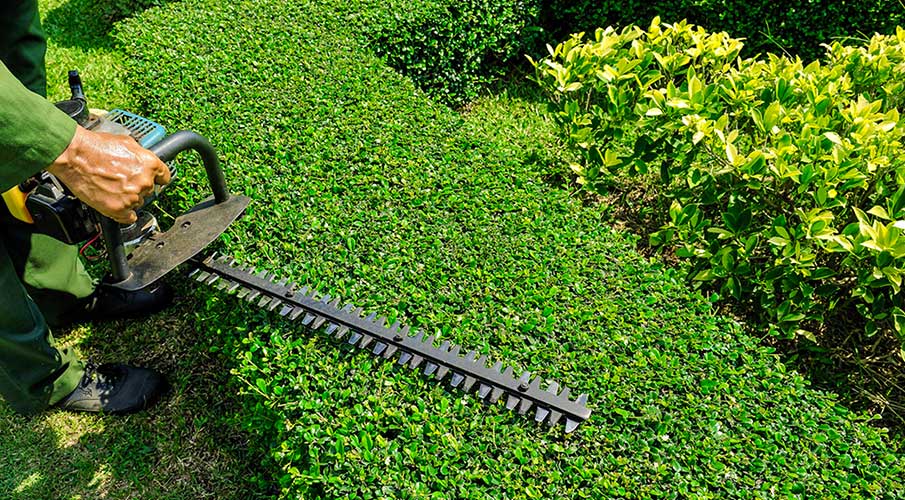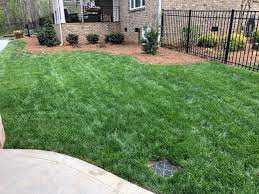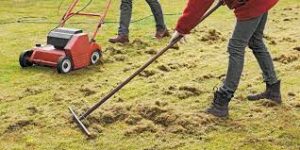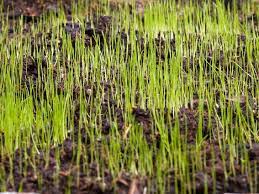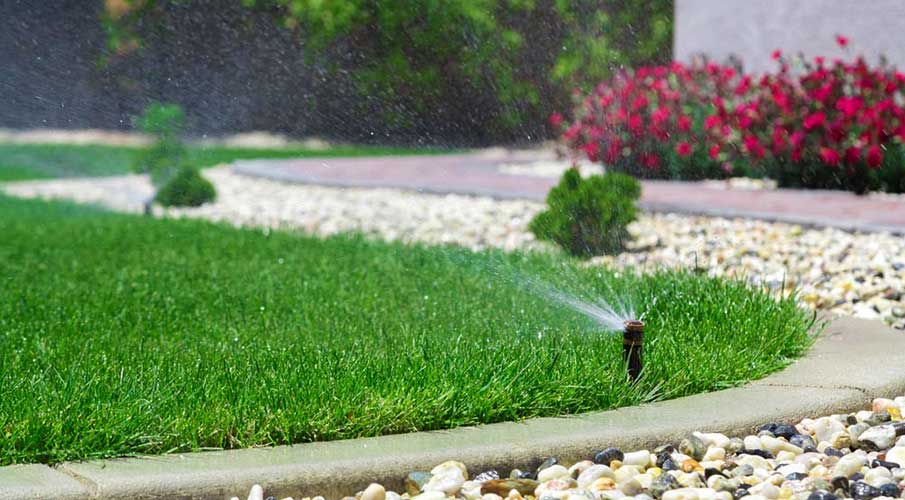Are you wondering how to aerate your lawn? In this article, we’ll cover what aeration is, why it’s important, what happens if you don’t aerate, when to aerate, how aeration saves water and fertilizer, what equipment to use, renting the equipment, and proper use of the equipment.
What is Aeration?
Aeration is the process of removing small cores of soil and grass from a lawn to create holes that allow air, water, and nutrients to reach the roots of the grass. These holes allow the soil to spread out, thus relieving compaction. This process helps to relieve soil compaction, improve water and nutrient absorption, and promote healthy root growth. Aeration is especially important for lawns in the transition zone, where the soil is often heavy and clay-like, making it difficult for water, air, and nutrients to penetrate.
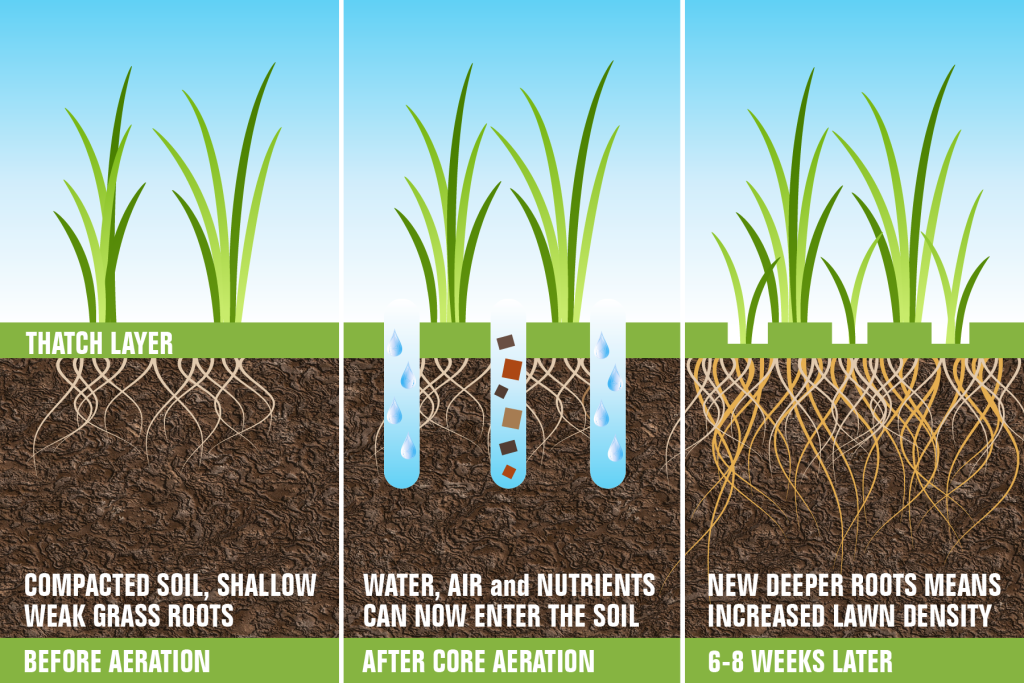
Why Aerate Your Lawn?
There are several reasons why it’s important to aerate your lawn. Here are some of the benefits of aeration:
- Relieves Soil Compaction: Over time, soil can become compacted due to heavy foot traffic, mowing, and other activities. This makes it difficult for water, air, and nutrients to penetrate the soil, leading to poor root growth and weak, unhealthy grass.
- Improves Water Absorption: When soil is compacted, water can’t penetrate deeply, causing runoff and water waste. Aeration loosens the soil, allowing water to penetrate deeper and reach the roots of the grass. This helps to reduce runoff and conserve water.
- Increases Nutrient Absorption: When soil is compacted, it’s difficult for nutrients to reach the roots of the grass, leading to poor growth and unhealthy lawns. Aeration helps to increase nutrient absorption by allowing water to carry nutrients through the soil to the roots of the grass so they grow strong and healthy.
- Promotes Healthy Root Growth: Aeration makes it easier for the turf to push its roots through the soil. This helps to create a healthy, dense lawn that can better resist weeds and pests.
What Happens if You Don’t Aerate?
If you don’t aerate your lawn, you may experience the following problems:
- Poor Drainage: When soil is compacted, water can’t penetrate deeply, leading to poor drainage and standing water on the surface. This can create an ideal environment for pests and diseases to thrive.
- Weak, Unhealthy Grass: When soil is compacted, it’s difficult for water, air, and nutrients to reach the roots of the grass, leading to weak, unhealthy grass. This makes the lawn more susceptible to weeds, pests, and diseases. The roots also can’t push through compacted soil as easily, so they end up stunted. Shallow roots have much less likelihood of reaching water deeper in the soil during Summer droughts.
- Soil Erosion: When water can’t penetrate deeply into the soil, it can lead to soil erosion and runoff, causing the soil to wash away and leaving bare patches on the lawn.
When to Aerate Your Lawn
The best time to aerate your lawn depends on the type of grass you have and your local climate. For fescue grass, it’s best to aerate your lawn in the spring and fall, when the grass is actively growing and the soil is moist but not waterlogged. Make sure your lawn gets water after aerating. This will allow the grass to recover quickly from the aeration process and benefit from improved fertilizer and water absorption.
How Aeration Saves Water and Fertilizer
Aeration can help to save water and fertilizer by allowing water and nutrients to penetrate the soil more deeply. When soil is compacted, water runs off the surface and doesn’t penetrate deeply, leading to water waste. Aeration creates small holes in the soil, allowing the soil to loosen up and absorb water more quickly and deeply.
Additionally, when soil is compacted, it’s difficult for nutrients to reach the roots of the grass. Not only can nutrients not travel down through the soil, but tight, compacted soils do not allow roots to spread out. Fewer roots mean less opportunities to collect nutrients and water. Aeration fixes this problem, allowing the roots of the grass to access the nutrients they need to grow strong and healthy. By improving water and nutrient absorption, you’ll be able to use less water and fertilizer to get the same healthy, resilient lawn.
What Equipment to Use for Aeration
There are two main types of equipment used for aeration: manual aerators and powered aerators. Manual aerators are typically handheld devices that you push into the soil, creating small holes. Powered aerators are more efficient, using hollow tines to extract small cores of soil and grass from the lawn. Powered aerators come in self-powered units and tow behind units that are pulled by a lawn tractor.
If you have a small lawn, a manual aerator may be sufficient. However, if you have a large lawn, a powered aerator may be a better option. Powered aerators can be rented from local equipment rental stores or online.
When looking for your aerator, you may notice some units with spikes instead of hollow tines. These units should never be used as they do not remove any material from the soil. They only poke holes in the ground. Spiked aerators do not relieve compaction and can damage the root systems of your grass. they have no practical purpose.
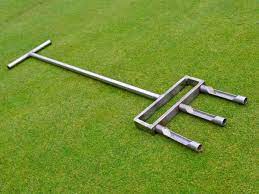
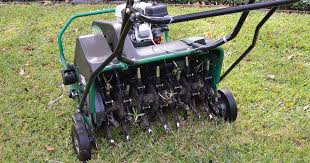
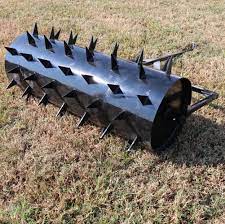
Renting the Equipment
If you don’t have a powered aerator, you can rent one from a local equipment rental store or online. When renting an aerator, make sure to choose a model that’s appropriate for the size of your lawn and your needs. You may also want to consider the rental period, as some stores offer daily or weekly rentals.
How to Aerate your Lawn
When using an aerator, it’s important to follow the manufacturer’s instructions and take safety precautions. Here are some tips for proper use of the aerator:
- Read the manufacturer’s instructions and familiarize yourself with the operation of the aerator.
- Wear protective clothing, including gloves and safety glasses, to protect yourself from debris.
- Take note of any obstacles in the lawn that could be damaged by the aerator tines. Most tines will not go deeper than 4″ underground.
- Start at one end of the lawn and work your way to the other end, making sure to overlap each pass.
- Avoid aerating when the soil is waterlogged or too dry, as this can damage the grass.
- Water the lawn after aerating to help the grass recover and promote healthy root growth.
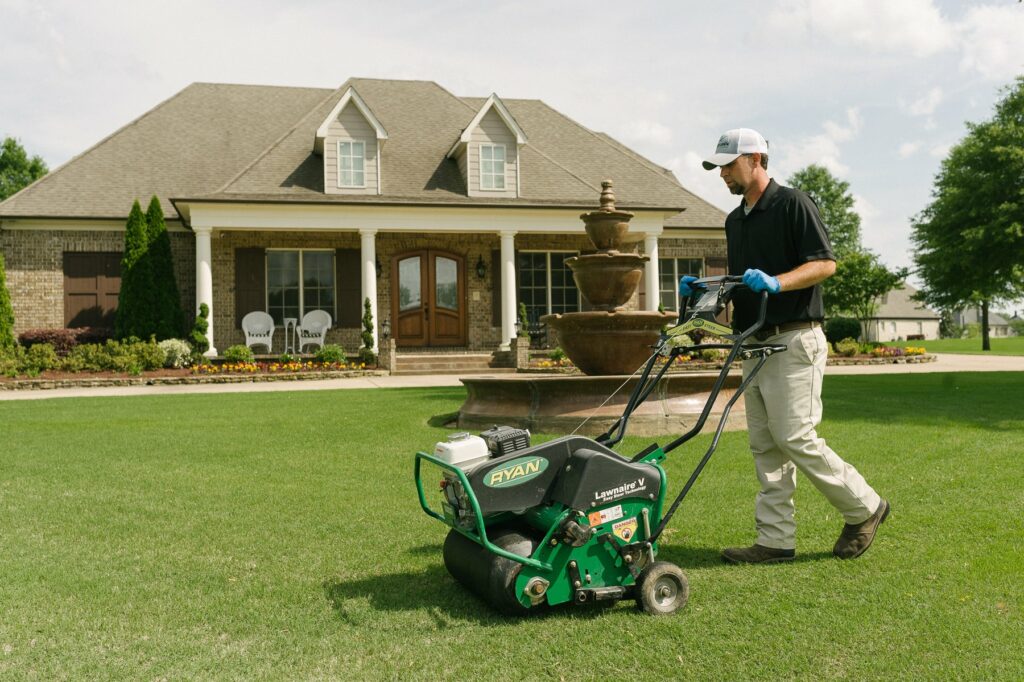
In conclusion, aeration is an integral aspect of lawn care, especially for homeowners with fescue grass in the transition zone. Aeration helps to relieve soil compaction, improve water and nutrient absorption, and promote healthy root growth, creating a healthier, more resilient lawn. By following the tips in this article, you can easily aerate your fescue lawn and ensure that it stays healthy and lush. Whether you choose to aerate manually or with a powered aerator, it’s important to do so at the right time and with the proper equipment. By aerating your lawn, you can improve its health, conserve water and fertilizer, and save yourself time and effort in the long run.
Looking for a professional to aerate your lawn for you? The team at Midwest Turf Pros can help! Click here to request an estimate.
